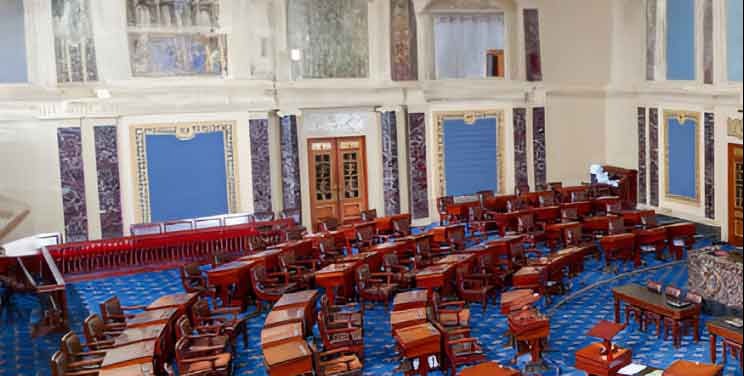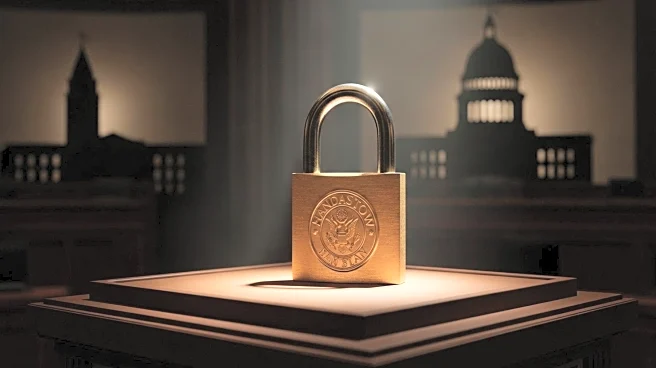What's Happening?
The U.S. government shutdown is set to continue into next week after the Senate rejected a bill to fund agencies through November 21. This marks the fourth time the Senate has failed to pass a continuing resolution, leaving hundreds of thousands of federal employees furloughed and others at risk of permanent job loss. The Trump administration initially furloughed approximately 550,000 employees, a number expected to rise if the shutdown persists. The Internal Revenue Service and other agencies have managed to keep employees working using alternative funds, but these are expected to deplete soon. The White House, through Press Secretary Karoline Leavitt, has indicated that mass layoffs are being considered, blaming congressional Democrats for the impasse.
Why It's Important?
The ongoing shutdown has significant implications for federal employees and the services they provide. Prolonged furloughs could lead to financial instability for many workers and disrupt essential government functions. The potential for mass layoffs adds to the uncertainty, affecting not only the employees but also the broader economy. The political standoff highlights deep divisions in Congress, with Democrats demanding healthcare-related concessions and Republicans insisting on reopening the government first. The situation underscores the challenges of governance in a polarized political environment, with real-world consequences for public sector workers and services.
What's Next?
The earliest possible resolution could occur on Monday, when lawmakers might vote again to end the shutdown. However, with no clear path to compromise, the shutdown could extend further, exacerbating the impact on federal employees and services. The Office of Management and Budget is working with agencies to identify necessary cuts, which could lead to more layoffs if the shutdown continues. Political leaders from both parties will likely face increasing pressure to reach an agreement as the economic and social costs of the shutdown mount.











